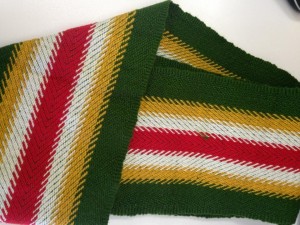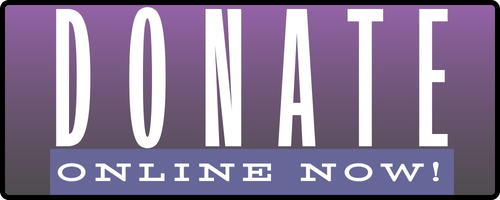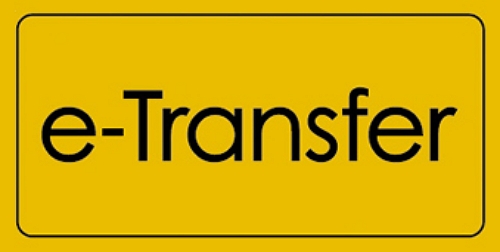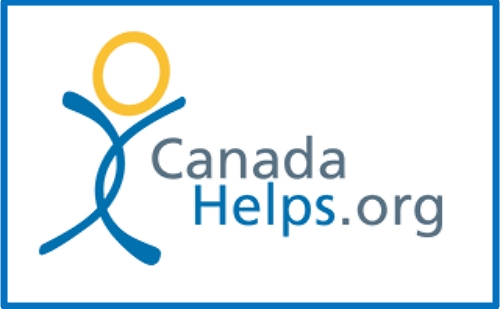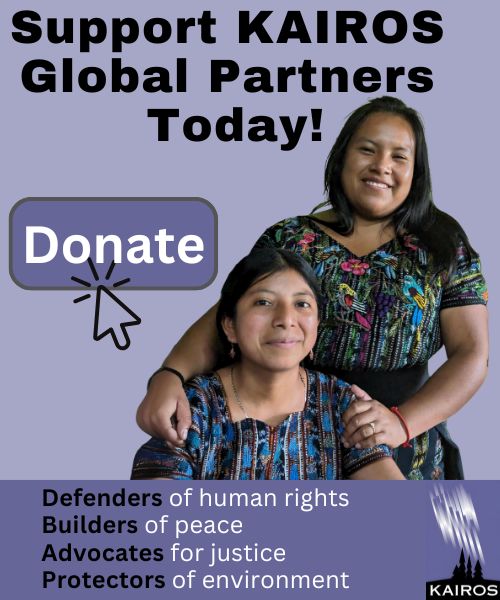To Repent, to Reconcile, to Make New
Sara is member relations and campaigns coordinator at KAIROS. She preached this sermon at Trinity St. Paul’s United Church in Toronto.
I remember as a child of 8 or 10 visiting the Royal Newfoundland Museum on a trip to St. John’s. I loved history and this visit was the highlight of the trip for me. I remember my father bringing me there and leaving me to my devices. I went up to the second floor and walked around, learning about the history and ethnography of the Beothuk. I don’t remember everything I saw, but in that era of historical interpretation, I’m sure it would have been things like dioramas, reconstructed artifacts, and copies of the limited pictorial record we have of the Beothuk. The last person known to be Beothuk, a woman named Shanadithit, died in 1829 after leaving behind a series of drawings explaining the Beothuk way of life. The rest of her people died as a result of disease, conflict, and starvation.
One thing I do remember, though, viscerally: a glass case in the centre of the room containing the mummified body of a Beothuk child.
I remember looking at it and recoiling, as I imagine some of you just did when you heard me describe what I saw.
That was my first encounter with an Indigenous person.
That memory has never left me, but in the past few years as I have, though my work with KAIROS, become more and more engaged in the work of Reconciliation with Indigenous peoples, it has become stronger and more resonant. The talisman of a troubled past. The harbinger of future responsibility.
This year, the KAIROS Advent resource focusses on reconciliation – with the land, in the waters, with Indigenous peoples, and across genders and generations. In the KAIROS world, this Sunday is a time to talk about reconciliation in the waters. But, unaccountably, KAIROS doesn’t always get its way and TSP asked me to talk about reconciliation with Indigenous peoples instead.
No matter, really. Reconciliation in the waters is, after all, one part of the work of reconciliation between Indigenous and non-Indigenous peoples. That’s symbolized for me in this Metis sash that I purchased in Edmonton last March at the last national hearing of the Truth and Reconciliation Commission. The green in this sash pattern represents the forest; the gold fields of wheat; the white snow; and the red the Red River. To me, this sash is a symbol of the breadth and depth of the reconciliation we strive for.
Attending hearings of the Truth and Reconciliation Commission is, as some of you know, not a light undertaking.
You hear stories of great loss. One survivor I listened to told of his brother crossing the frozen lake to meet a plane, where he was to take pelts to trade for candles and other items. Instead, he was scooped up into the plane and flown off. His mother watched this, running across the lake herself to chase the plane as it took off. His brother did not survive residential school.
You hear stories of resilience. Lynda Minoose, a survivor speaking about the language she was forced to stop speaking but has been working ever since to reclaim for herself and younger generations, testified that “I have not died. I am not a statistic.” Another survivor, Norman Yakeleya, said that “If you know our land, you know our life,” encapsulating for me a sense that no matter how hard Canadian governments, churches, and society tried, we ultimately failed to “kill the Indian in the child,” which was a stated purpose of residential schools.
And you hear stories of repentance. I watched RCMP commissioner Bob Paulson reflect on his years as a young officer in Indigenous communities and quietly acknowledge, “I know what we did.” I watched my friend, Susan Johnson, the National Bishop of the Evangelical Lutheran Church in Canada, emotionally offer her church’s expression of reconciliation. The ELCIC itself played no role in residential schools, but as a part of the Canadian Christian culture that engendered these schools, it feels the baptismal call for confession and repentance.
The lectionary notes in our Advent resource for this Sunday were written by Lori Ransom, a member of the Algonquin nation, a Presbyterian, and Senior Advisor for church relations with the Truth and Reconciliation Commission of Canada. I’m using some of Lori’s interpretation of these texts this morning. That in itself – the church looking to First Nations for biblical interpretation – is, I hope, a tangible step towards reconciliation.
Lori suggests that, in its entirety, Isaiah 40 “reminds us of how utterly unfathomable, how mysterious and how Holy beyond our comprehension is God’s abiding love for God’s people and how much more we should rely on God than on anything or anyone else.” And, within the context of that relationship, she asks, what have we done that alienates us from God? What have we done, as individuals, as churches, as a society, that demands reconciliation?
We are, through baptism, through our relationship with God, called to repentence. The text from Mark, the beginning of Mark’s gospel, makes this abundantly clear. John the baptizer is a harbinger of what is to come; immersion in water is one thing, immersion in the Holy Spirit is quite another. The rapidity with which things follow in subsequent chapters —Jesus’ own baptism, his being cast into the wilderness, his calling of the disciples, and engaging his ministry— make this very clear. Baptism is not a benign thing; it brings with it great responsibility.
As Lori suggests in her commentary, “Confession and repentance are positioned in this gospel as critically important activities for the follower of Christ.” She goes on to reflect upon the Indigenous phrase “all my relations,” concluding that “when we are not in right relationship with other people and with Creation we are not in right relationship with God.” This is, I think, an interpretation that we should all take to heart. “When we are not in right relationship with other people and with Creation we are not in right relationship with God.”
The Truth and Reconciliation Commission has helped us to trace out the truth of what we have done, as churches and as a society, to Indigenous peoples in Canada, and indeed to Canada as a whole. It has given us the opportunity to express our desire to be reconciled. In my experience, it has been a tremendous moment of grace. That so many of those whom we have harmed so badly in the name of Christianity and of progress have agreed to sit down with us? That is remarkable.
But it’s not the end of the story. In June 2015, the Truth and Reconciliation Commission will hold one last gathering in Ottawa – not for testimony and expressions of reconciliation but, in the thinking of the commissioners, to hand the work of the Commission, the work of reconciliation, over to the Canadian people.
We were given such an opportunity before, in 1996, when the report of Royal Commission on Aboriginal Peoples (RCAP) was released. We ignored it.
A commission called to explore the roots of the struggle that led to Oka and other crisis points in the Indigenous/Settler relationship, RCAP concluded that Canada needed to chart a new relationship based on mutuality and respect, one that honoured treaty and nation-to-nation relationships as well as Indigenous rights. Canada quite literally put that report on the shelf and forgot about it.
Now, as Christians and as disciples for social justice –whose fundamental beliefs were used to justify the colonial system that gave rise and shape to residential schools– we must ask, what are we going to do when the TRC report is issued in June? What form will our repentance take? How will we, to use the language of the United Church creed, reconcile and make new these relationships?
National Anglican Indigenous Bishop Mark MacDonald said in Edmonton that the treaties made Indigenous peoples and churches relatives, but the churches haven’t always understood that.
We as a church can only hope to be reconciled if we take his point to heart, and try our best to live it out. The treaties made Indigenous peoples and churches relatives.
Archbishop Fred Hiltz, Primate of the Anglican Church of Canada, said at the same time that respecting Indigenous Rights, respecting Free Prior and Informed Consent, is a fundamental part of Reconciliation.
We as a society will only be reconciled when we honour the rights of Indigenous peoples to determine their own futures.
When we accept that the treaties, nation-to-nation relationships, and the Constitution give Indigenous peoples the right to consultation and consent on changes to legislation that affect Indigenous rights — such as recent changes to the Fisheries and Navigable Waters Protection Act.
When we accept that the UN Declaration on the Rights of Indigenous Peoples assures Indigenous peoples the right to a full say in development projects on their territories – such as expansion of tar sands projects on Athabasca Chipewyan territory, and pipelines on Coast Salish territory.
When we accept that this framework of rights assures Indigenous peoples equity in social welfare and education funding. Currently, First Nations schools receive between $2000 and $3000 less funding per student than provincially-run schools.
When we accept that more than 1000 murdered and missing Indigenous women in Canada is indeed not just a criminal matter, but a profound social dissonance.
Because we, as a society, have stood by and let these things happen.
Marjorie Wright, another survivor I heard at the TRC said it all in three simple words: “It’s about time.”
It’s about time that we, as a society, accept these truths. It’s about time we acknowledge the nature of our relationship. It’s about time we repent, reconcile, and most importantly, make new.
It’s about time.
Back to the story I began with. I went back to the Royal Newfoundland Museum when I was living in St. John’s as a student at Memorial University; by then, the child’s body had been removed. But where, I didn’t know, and several attempts over the years to find out what had happened turned up nothing.
I was back in St. John’s in October, and had the opportunity to participate in a Newfoundland version of the Blanket Exercise, the participatory lesson in the history of Indigenous/non-Indigenous relations in North America that KAIROS has been facilitating since the end of the Royal Commission. I also had the chance to talk to some staff from the Aboriginal Resource Office at the university and I asked about the body. Had it been returned to an Indigenous community, such as the Miawpukek Mi’kMaq community in Conne River?
The answer is no. The body could not be given to or received by the Miawpukek because it is Beothuk, not Mi’kMaq. Repatriation of a body requires that it be sent back to the people, the nation, from which it was taken. And there are, so far as we know, no more Beothuk among us. So it remains, along with at least one other body, in preservation in a building on the Memorial campus. The best you can say is that it’s no longer on public display.
My first encounter with an Indigenous person remains as unsettling to me now as it did almost 40 years ago. But it is not the end of the story. New research may conclude that Beothuk ancestry, however far removed, still exists in Newfoundland.
And, it turns out, this was in fact not my first encounter with an Indigenous person. I didn’t know it at the time, and they may not have either, but I lived down the street from, went to school with, and am even related to people who have now claimed or are claiming their Indigenous identity as members of the Qalipu Mi’kMaq of western Newfoundland.
I learned all of this within the last two years or so.
To paraphrase Marjorie Wright, it was about time.
